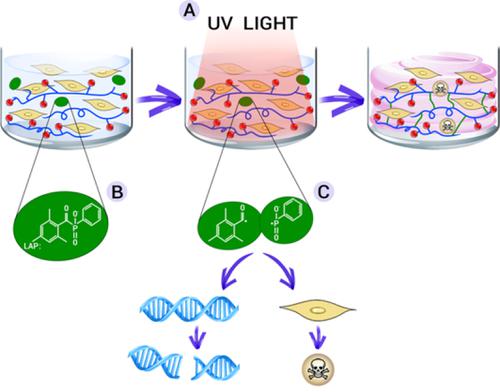当前位置:
X-MOL 学术
›
Stem Cells Transl. Med.
›
论文详情
Our official English website, www.x-mol.net, welcomes your
feedback! (Note: you will need to create a separate account there.)
Human articular cartilage repair: Sources and detection of cytotoxicity and genotoxicity in photo-crosslinkable hydrogel bioscaffolds.
STEM CELLS Translational Medicine ( IF 5.4 ) Pub Date : 2019-11-26 , DOI: 10.1002/sctm.19-0192 Cheryl Lee 1 , Cathal D O'Connell 2 , Carmine Onofrillo 1, 2 , Peter F M Choong 1, 2, 3 , Claudia Di Bella 1, 2, 3 , Serena Duchi 1, 2
STEM CELLS Translational Medicine ( IF 5.4 ) Pub Date : 2019-11-26 , DOI: 10.1002/sctm.19-0192 Cheryl Lee 1 , Cathal D O'Connell 2 , Carmine Onofrillo 1, 2 , Peter F M Choong 1, 2, 3 , Claudia Di Bella 1, 2, 3 , Serena Duchi 1, 2
Affiliation

|
Three‐dimensional biofabrication using photo‐crosslinkable hydrogel bioscaffolds has the potential to revolutionize the need for transplants and implants in joints, with articular cartilage being an early target tissue. However, to successfully translate these approaches to clinical practice, several barriers must be overcome. In particular, the photo‐crosslinking process may impact on cell viability and DNA integrity, and consequently on chondrogenic differentiation. In this review, we primarily explore the specific sources of cellular cytotoxicity and genotoxicity inherent to the photo‐crosslinking reaction, the methods to analyze cell death, cell metabolism, and DNA damage within the bioscaffolds, and the possible strategies to overcome these detrimental effects.
中文翻译:

人类关节软骨修复:光交联水凝胶生物支架中细胞毒性和遗传毒性的来源和检测。
使用可光交联水凝胶生物支架的三维生物制造有可能彻底改变关节移植和植入的需求,其中关节软骨是早期的目标组织。然而,为了成功地将这些方法转化为临床实践,必须克服一些障碍。特别是,光交联过程可能会影响细胞活力和 DNA 完整性,从而影响软骨分化。在这篇综述中,我们主要探讨了光交联反应固有的细胞毒性和基因毒性的具体来源,分析生物支架内细胞死亡、细胞代谢和DNA损伤的方法,以及克服这些有害影响的可能策略。
更新日期:2019-11-26
中文翻译:

人类关节软骨修复:光交联水凝胶生物支架中细胞毒性和遗传毒性的来源和检测。
使用可光交联水凝胶生物支架的三维生物制造有可能彻底改变关节移植和植入的需求,其中关节软骨是早期的目标组织。然而,为了成功地将这些方法转化为临床实践,必须克服一些障碍。特别是,光交联过程可能会影响细胞活力和 DNA 完整性,从而影响软骨分化。在这篇综述中,我们主要探讨了光交联反应固有的细胞毒性和基因毒性的具体来源,分析生物支架内细胞死亡、细胞代谢和DNA损伤的方法,以及克服这些有害影响的可能策略。











































 京公网安备 11010802027423号
京公网安备 11010802027423号